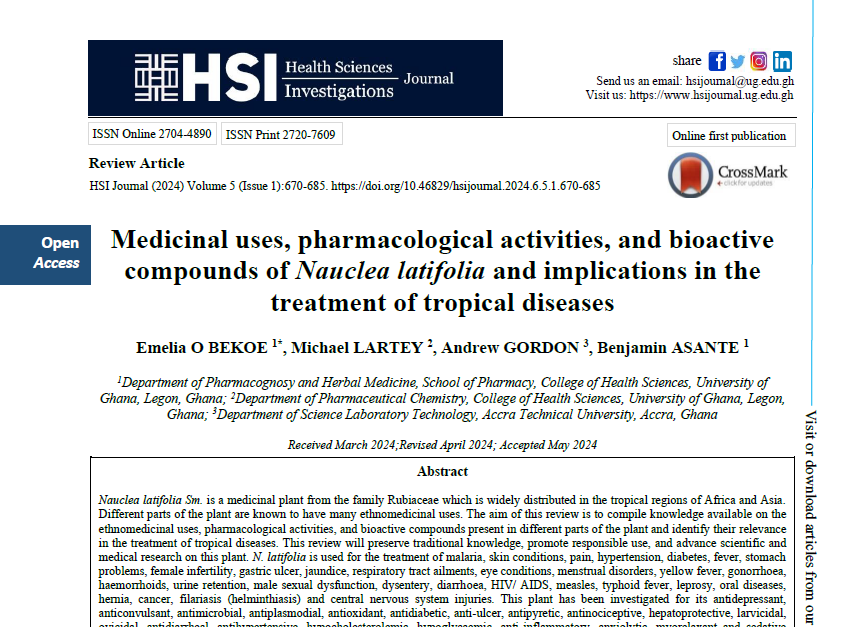Medicinal uses, pharmacological activities, and bioactive compounds of Nauclea latifolia and implications in the treatment of tropical diseases - an anthropological review
Medicinal uses, pharmacological activities, and bioactive compounds of Nauclea latifolia
Abstract
Nauclea latifolia Sm. is a medicinal plant from the family Rubiaceae which is widely distributed in the tropical regions of Africa and Asia. Different parts of the plant are known to have many ethnomedicinal uses. The aim of this review is to compile knowledge available on the ethnomedicinal uses, pharmacological activities and bioactive compounds present in different parts of the plant, and identify its relevance in the treatment of tropical diseases. N. latifolia is used for the treatment of malaria, skin conditions, pain, helminthiasis, hypertension, diabetes, fever, stomach problems, female infertility, gastric ulcer, jaundice, respiratory tract ailments, eye conditions, menstrual disorders, yellow fever, gonorrhoea, haemorrhoids, urine retention, male sexual dysfunction, dysentery, diarrhea, HIV/ AIDS, measles, typhoid fever, leprosy, oral diseases, hernia, cancer, leprosy, filariasis (helminthiasis) and central nervous system injuries. This plant has been investigated for its antidepressant, anti-convulsant, antimicrobial, antiplasmodial, antioxidant, antidiabetic, anti-ulcer, antipyretic, antinociceptic, hepatoprotective, larvicidal, ovicidal, antidiarrheal, antihypertensive, hypocholesterolemic, hypoglycaemic, anti-inflammatory, anxiolytic, myorelaxant and sedative activities. Scientific justification for its usage in treatment of viral infections, hypertension, helminthiasis, stomachache, diabetes, back ache, fever, cancer, malaria, diarrhoea, measles, conjunctivitis and gastric ulcer have been established. However, further studies are needed to justify its use in the treatment of urine retention, male sexual dysfunction, HIV/ AIDS, hernia, female infertility, as well as Parkinson’s and Alzheimer’s disease. The phytoconstituents detected include proanthocyanins, alkaloids, tannins, flavonoids, glycosides, phenols, steroids


